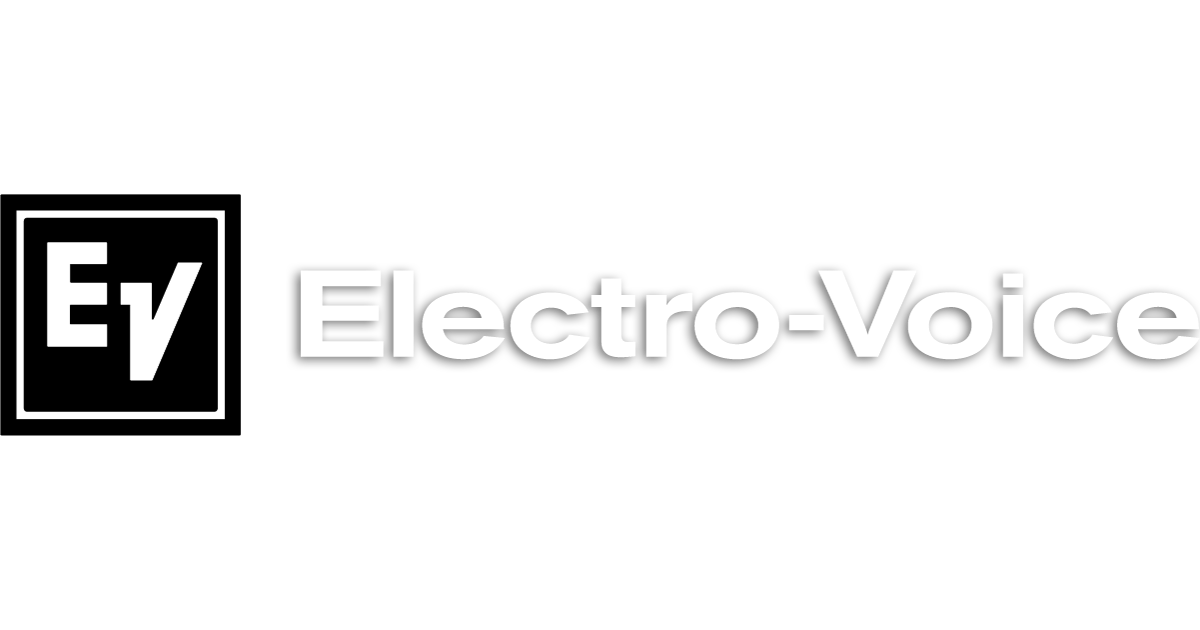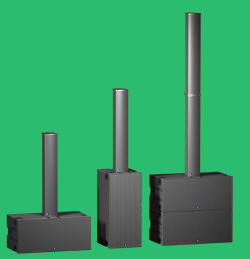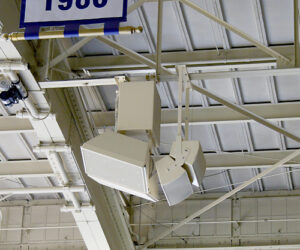Installed systems are often employed in reverberant public spaces – houses of worship, auditoriums and passenger terminals – predominately for public address.
The characteristics of line source columns – wide horizontal coverage, minimal vertical coverage above and below the enclosure and coherent sound in the vocal range – are all attractive features for these kinds of venues.
Driver spacing determines the highest frequency at which a column of identical drivers acts as a line source, while the height of the column determines the lowest frequency with directivity.
As with modular line arrays, a short system might efficiently throw the midrange, but leave a puddle of low-frequency mud behind the enclosure.
Although they’ve been around for more than a half-century, column loudspeakers remain popular because they offer a compromise solution for those who need efficiency in the vocal range combined with even coverage and a skinny profile that makes them acceptable on the walls of public assembly spaces.
Investigations into line source coupling behavior and pattern control tell us that loudspeaker cones exhibit coupling behavior up to a frequency whose wavelength is half the distance between adjacent acoustic centers.
In architectural columns. 6.5-inch diameter cones, when tightly-spaced, will couple up to about 1,000 Hz, while 4-inch cones couple to about 1,600 Hz and 2-inch cones to 3,300 Hz.
Above these frequencies top and bottom lobes appear in the polar response; however, restricting the high frequency response of some of the cones can reduce lobing.
This can be achieved with passive filters in the cabinet, or with active filters used in DSP-driven steerable columns.
It’s common for line source columns to be combined as multiple cabinets to achieve better performance as taller systems for bigger rooms.
Longer columns provide pattern control reaching to lower frequencies. A 9-foot column can provide control to 125 Hz, so combining three 3-foot columns can increase low frequency performance.
As with miniature line arrays, some systems have companion LF columns which employ long-excursion small-format woofers to extend pattern control to lower frequencies. Alternately, traditional subwoofers can supplement a column’s LF response.
A specialized version of the line source column is called “digitally steerable,” incorporating individual amplification, delay and equalization for each driver, allowing the column’s vertical coverage to be tilted down (or up) and focused for short or long throws, though its horizontal coverage remains fixed.
One advantage to digital steering is that the entire coverage pattern can oriented downwards. Mechanically tilting a passive array adjusts the farthest coverage, while leaving the coverage towards its sides near the original height.
Renkus-Heinz IC Live/Iconyx is an example of this newer breed of digitally steered line source column.
Combined with its companion subwoofer, Iconyx has proven capable of supporting more demanding full-range applications, such as live rock/pop music, as we witnessed twice at concerts at the 2010 Winter NAMM show. It delivered impressive bandwidth and dynamic range – very well controlled – in indoor and outdoor venues that could be charitably called “acoustically challenging.”
With advances of this type ongoing in the world of line source columns, the future of this loudspeaker genre looks bright for good reason.
Enjoy the Real World Gear Photo Gallery Tour of the latest available models.
















